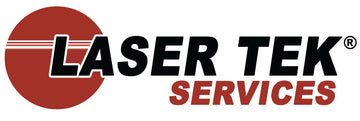Graphic designers print more than any other creative-related profession. Before, they had to go to specialized print shops just to get the quality, size or any specification they require which most printers at home are incapable of doing so. Printers that produce high quality image resolutions with the color balance graphic designers require were expensive and were intended to be sold for business.
Today, graphic designers have the flexibility to choose a variety of printers that meet their requirements without breaking the bank. Thanks to the ever-developing printing technology, that kept up the consumer-grade printers with the business biggies. If they should produce the best final print as accurate and brilliant as possible to impress their clients. It is that vital.
But what do graphic designers look out for?
Are You My Type?
Graphic designers aren’t limited for their use of their printer. When it comes to their business, they use the best printer required at hand. It’s not surprising if they have several printers, one or more of each type, in their office. The common types are the inkjets and lasers but there are task-specific or differently spec-ed printer types such as photo printers, dye sublimation printers, large format printers, label printers, sticker printers or card printers. When quality is of utmost important, it’s best for graphic designers to consider these printers for their needs rather than let a laser or inkjet do a half-baked job unless their inkjets or lasers satisfactorily fit the bill.
Does Size Matter?
Every printing task requires a specific or range of paper sizes. Graphic designers would want to check for the maximum paper size a printer can handle. Unless they need A3 or A2 sizes, the most predominant paper sizes in use today are A4, Letter, and Legal and virtually all printers support the latter three sizes. Any other sizes are task-specific that are supported by special purpose printers.
How Thick Should It Be?
Graphic designers should pay more attention to the supported paper thickness specification than paper size if their choice boils down to inkjet or laser. A printer should be able to support light, double-sided or heavy paper stock unless they only need to print drafts or monochrome sketches. A light paper wouldn’t able to withstand a graphic heavy print as the ink can smear or damage the paper even during printing process, causing paper jams. Most laser printers can’t support heavy paper like cards so an inkjet would be a reasonable option.
The Pigment or Dye is Cast
Most inkjet printers have either dye-based ink or pigment-based ink. Dye-based inks are the commonly used ink found in most inkjet printers but don’t last long. Pigment-based inks are water-resistant, lasts long but is more expensive. The color differences between the two ink types are only discernible by professionals with trained eyes. While choosing between the two types, never interchange one type to the other as pigment-based inks will clog the dye-based nozzles.
Ultimately, graphic designers’ choice will depend on the type of image they usually work with within their budget. Any criterion they require that falls short or just doesn’t cut it but any spec that goes beyond their needs can be a moot luxury or flexibility for their business.





